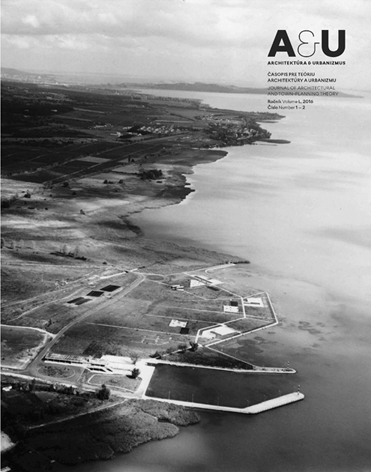Poznámky k bratislavskému pôsobeniu stavebnej firmy architekta Emila Brülla
Notes on the Bratislava Activities of the Architect Emil Brüll´s Construction Company
Author(s): Eva BoreckáSubject(s): Fine Arts / Performing Arts
Published by: Historický ústav SAV, v. v. i.
Keywords: Emil Brüll;modern architecture; Bratislava; jewish architects;interwar Czechoslovakia;
Summary/Abstract: The architect Emil Brüll was a member of the group of Slovakia’s Jewish architects who died or were executed during WW II. He worked in Bratislava, mostly in the 1920s and 1930s. This contribution aims to clarify and complete our information about his work. Many buildings that have been the subject of study for architecture of the interwar period have been ascribed authorship by Brüll. However, according to the findings of our research he worked on these buildings only as a builder. The inaccuracy was caused by the marking of project documentation, archived as a part of the permission to use the building and examined by researchers, with the stamp “Architect Emil Brüll, building enterprises”.Despite Brüll´s widespread building activity in Bratislava during the First Republic, we know very little about his personal life. He was born in 1891 in Bratislava, into a Jewish family. He began his university studies in 1909 at the Royal Hungarian Technical University of Archduke Josef in Budapest, also called the Polytechnic. In spring 1922, after his graduation, Emil Brüll returned to Bratislava and established a firm in partnership with Emanuel Lebovics. On February 1923, they designed and constructed a twostorey building in Grösslingová ulica 55. The project documentation is signed in both German and Hungarian, “ArchitektIngenieur, Emil Brüll & Emanuel Lebovics, épitészmérnök”; a small marble tablet on the house facade reads in German: “Entwurf u. Ausführung, Brüll und Lebovics, Architekten u. Baumeister”. At present, this building is the only realised architectural design known for which clear authorship can be ascribed to to Brüll and his partner Lebovics. The search for an original form architectural expression underway in the early twenties is legible in this building, as well as in the buildings of most of the region’s postwar architects.Regardless of the exact range and authorship of Brüll´s own architectonic work, the activity of his building company led to the highquality realisation of works by many wellknown architects of the era, which we can admire even now in nearly unchanged form. According to facts as currently established, Brüll cooperated with the major architects of functionalism, mainly in the period of the thirties, the most important years of his firm. Among those architects were Alexander Skutecký, Július Sporzon and Ludovít Korínek, H. K. Stark, or Bohuslav Fuchs. Brüll also specialized in complex assignments, e. g. multistorey apartment blocks with at roofs, buildings with reinforced concrete structures, or foundations laid in complicated geological conditions. His realizations were often impressive buildings that fully represented the aesthetic hopes of the era and the social status of their clients. Currently, the activities of Brüll’s firm in Bratislava’s central zone and its rapidly developing suburbs have largely been recorded. The present study would like to open for discussion the topic of a more detailed understanding of architect Emil Brüll´s work. His activity in Poprad, Slovakia, where he reportedly stayed from the beginning of WW II, and where he is believed to have designed the airport and several private residences, remains unknown.
Journal: Architektúra & Urbanizmus
- Issue Year: 50/2016
- Issue No: 1-2
- Page Range: 104-109
- Page Count: 6
- Language: Slovak

